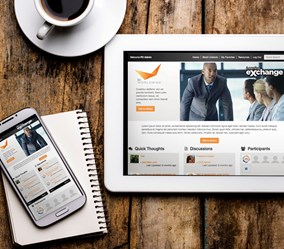The cost of replacing an employee in the first year is estimated to be at least three times their annual salary. The high cost of early stage employee turnover means effective onboarding of new employees is a critical business necessity.
An average onboarding program typically doesn’t move the needle against the sobering new hire data. In fact, new employees decide if they feel at home at your company within three weeks and nearly half of all new hires experience some significant form of failure in their first 18 months on the job.
The most effective onboarding solution improves the retention of first year employees to 86%. At the same time, the people who tend to stay are the employees that businesses want to keep – and the people who tend to leave are those that aren’t a good long-term fit.
An effective employee onboarding program is based on these six best practices pillars.
1. Engagement is the primary metric
BIW’s research on employee engagement consistently shows that engaged employees perform more intensely and are more committed to their organizations. Thinking of onboarding only as an employee orientation program or only as a learning program leaves out engagement - a key driver of performance and retention.
New hires are most engaged when they accept your offer for employment. “I got the job!,” they tell their friends. Engagement is rarely ever that high again. Even on day one, 4% of new employees have a disastrous experience and leave.
The job of a best practices onboarding solution is to keep that engagement level as high as possible. Doing so shortens an employee’s “time to performance” and helps businesses retain people.
2. Start before the beginning
Engage and educate your new hires before they come to work on their first day. The best onboarding programs start engaging with new hires immediately after they’ve accepted an offer. For example, hiring managers and future colleagues will reach out to the new hires and express excitement about their decision to join the company. This tactic helps to reinforce that “everyone” sees the new hire as a great fit.
At the same time, many new hires are looking for ways they might impress their new boss or get a leg up on other new employees. A great onboarding solution takes advantage of this and presents company history and culture learning before day one. It’s a great way to keep the new hire engaged and to get some introductory information out of the way early.
I recently spoke to the father of a new college graduate (who was hired in October). The graduate wasn’t scheduled to start employment until August (after graduation). In June, the student was convinced he was headed to work for one of the best companies in the world – and it was still two months before his first day. The hiring company did a great job of staying connected with the student through communications and learning. Their approach included human resources, the hiring manager and executive participation in monthly webinars about the company, their culture and the results the company delivers for their customers.
3. Design across multiple functions
Too often the onboarding process specializes in the area of the person who originally built the process. If it was HR, it’s got a strong orientation component and getting the right forms filled out properly and on time. If it was marketing, you communicate well and often with the new hire. If it was a senior executive, it does a great job of outlining the company’s big picture strategy and rotates other executives in to talk about their slice of the pie. If it was the training department, the training is well-designed and the content is probably up to date but not too flashy.
The best onboarding program does it all and each component is done well. That means you need a cross-functional team to design the program to communicate, orient, give company context, train well in an engaging format – and the right forms filled out quickly and on time.
4. Train employees to know, feel and do
Onboarding content should address what new hires should know, feel and do.
When it comes to the “know” of onboarding training, everyone teaches facts. The ubiquitous and dreaded death by PowerPoint is the tool of choice.
But best practices onboarding doesn’t stop with teaching facts; it affects how people feel – it affects their attitudes. Onboarding training needs to address the question of why the training and the job itself is important. Neuroscience shows that addressing the “why” penetrates to the limbic part of the brain responsible for our choices, our trust and our loyalty. When onboarding addresses the “why”, a business can create actualized behavior change in its new employees.
Finally, it’s critical that your training address “how” the new hire can do their job. When people report that they have had the training to do their job well they are over three times happier at their current job, over three times more committed and have a performance score nearly four times higher than those who didn’t receive training to do their job well.
5. Recognize & reward early and often.
While it is intuitive that people who are recognized for their work will stay around longer, BIW’s internal research now proves the point. There is a strong correlation between recognition, reward and a marked reduction in turnover.
Recognize someone once and you make an impact. Turnover among those who receive at least one recognition is 26.2% compared to 43.9% among people who have not received any recognition throughout the six months of our research study.
Recognize that person multiple times and you increase your impact. Employee turnover decreases as frequency of recognitions increases. A 10% reduction in turnover is seen between those who receive very infrequent recognition compared to those who receive much more frequent recognition.
Recognize and reward that person to maximize the impact on turnover. Turnover is 4x higher among employees with the lowest number of recognitions with an award compared to employees receiving the highest number of recognitions with an award
6. Extend onboarding into your EVP
Employee Value Proposition (EVP) is the formalization of the unique reciprocity model your company has with its employees. It’s what they get from the company in return for staying and performing well in their jobs. The goal of EVP is to attract, engage and retain employees to meet your business objectives or your customer value proposition. Effective onboarding contributes to your EVP instead of detracting from it.
Onboarding should go beyond an orientation and getting new hires up to speed. Great onboarding is a process of continuous activities designed to train, coach, communicate, reward and recognize until the new hires have mastered their role. Then, the onboarding seamlessly integrates right into career development. This reinforces a critical part of almost every company’s EVP, which is “stay here and perform well and we’ll help you grow.”
One Manhattan-based luxury brand has three distinct phases to their onboarding vision. First, their onboarding trains their retail associates need to get up to speed as an “apprentice” in their stores. Subsequently, each month the new employees receive rewards, training and communications needed for that specific retail season. Lastly, a career development phase allows the “apprentice” to become an “ambassador” and eventually move into management – delivering on their career development EVP.
















